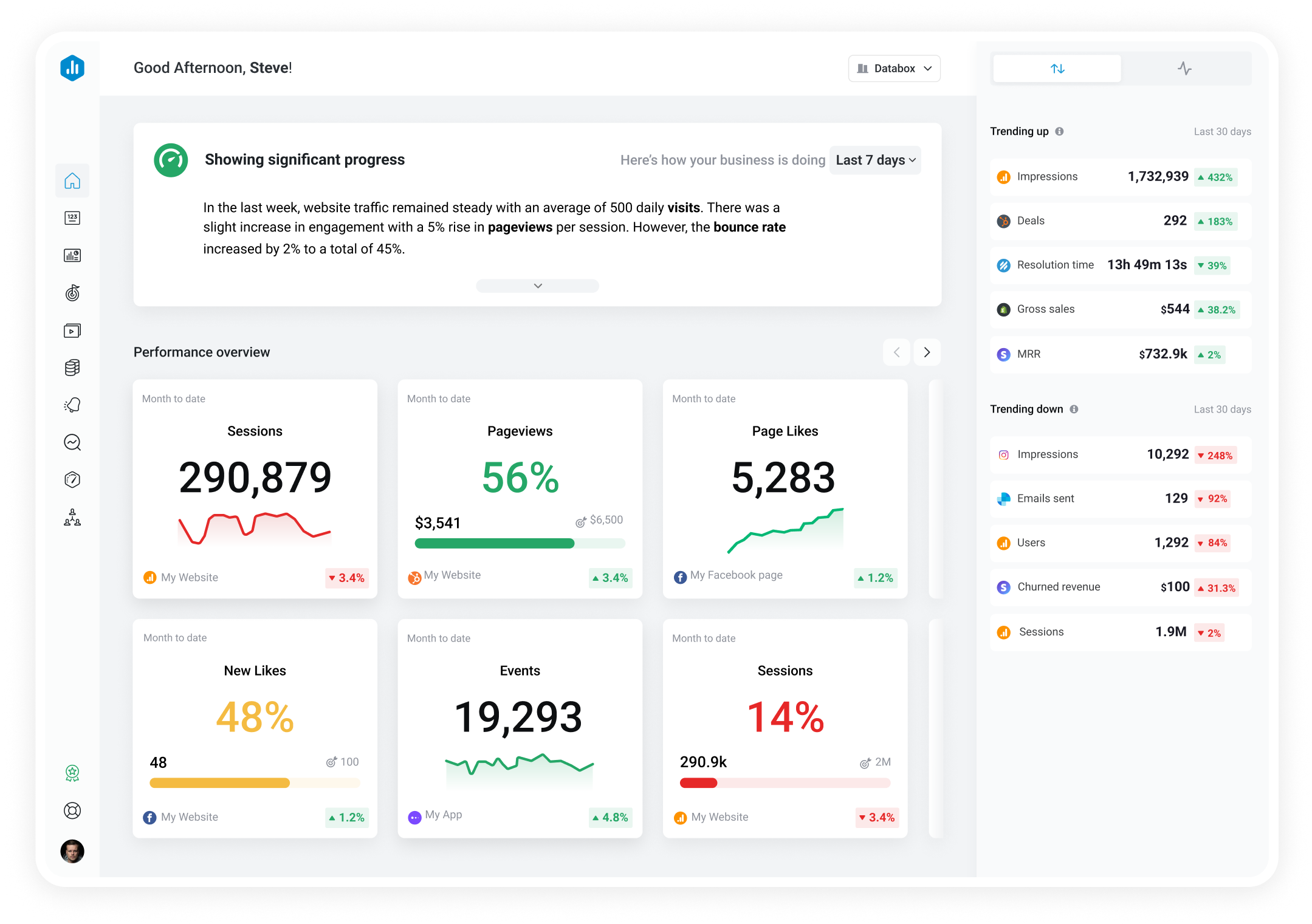Track all of your key business metrics from one screen
GET STARTED
 HubSpot Marketing
Contacts (w/o Offline Source)
HubSpot Marketing
Contacts (w/o Offline Source) The Contacts (w/o Offline Source) metric in Hubspot measures the number of contacts in your database that were acquired through online channels such as website forms, landing pages, social media, and email, excluding any offline sources such as events or direct mail.
With Databox you can track all your metrics from various data sources in one place.

Used to show a simple Metric or to draw attention to one key number.
Databox is a business analytics software that allows you to track and visualize your most important metrics from any data source in one centralized platform.
To track Contacts (w/o Offline Source) using Databox, follow these steps:
 Goals
Goals Scorecards
Scorecards Metric Digest
Metric Digest Metric Builder
Metric Builder Data Calculations
Data Calculations Performance Screen
Performance Screen